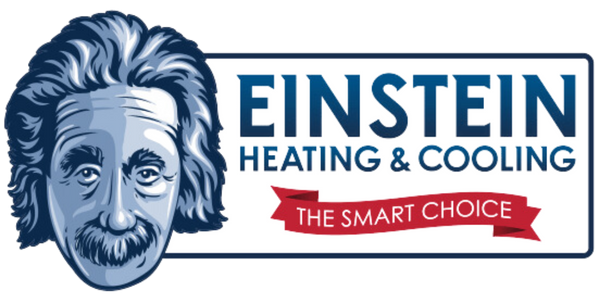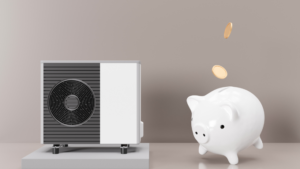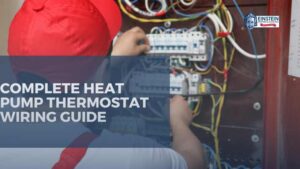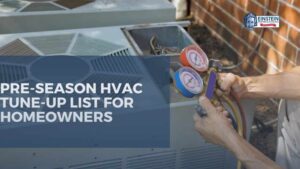Heat pumps are indispensable components of HVAC systems, offering both heating and cooling functionalities. However, in regions like Phoenix, Arizona, where temperatures can vary significantly, heat pump defrost issues can be a common concern. Addressing these problems promptly is crucial to ensure optimal performance and energy efficiency. In this blog post, we will delve deeper into various factors that contribute to heat pump defrost problems and explore effective solutions for heat pump repair in Phoenix.
What Is A Heat Pump?
A heat pump is a versatile and energy-efficient HVAC (heating, ventilation, and air conditioning) system that provides both heating and cooling functions. Unlike traditional heating systems that generate heat through combustion or electrical resistance, a heat pump operates by transferring heat between the indoor and outdoor environments. This transfer of heat is facilitated by the refrigeration cycle, a fundamental process that allows the heat pump to extract warmth from the air or ground and deliver it to the desired space.
What Are The Components of A Heat Pump?
The basic components of a heat pump include an outdoor unit, an indoor unit, a refrigerant, a compressor, an expansion valve, and coils. During the heating mode, the outdoor unit absorbs heat from the surrounding air or ground, and the refrigerant within the system evaporates, transforming into a low-pressure gas. The compressor then pressurizes this gas, raising its temperature, and the heated refrigerant is circulated through coils in the indoor unit. As the refrigerant releases its heat indoors, it condenses back into a liquid, and the process repeats.
Conversely, during the cooling mode, the heat pump reverses the cycle. The indoor unit extracts heat from the indoor air and releases it outside, effectively cooling the indoor space. The refrigerant absorbs the heat indoors, becomes a gas, and is then compressed to a high pressure. The outdoor coils release the heat as the refrigerant condenses back into a liquid, completing the cycle.
In Phoenix, Arizona, where temperatures can soar during the summer and drop during the winter, heat pumps offer several advantages for residents.
Benefits of Heat Pumps in Phoenix:
- Energy Efficiency: Heat pumps are known for their energy efficiency, as they transfer heat rather than generate it. This efficiency can result in lower energy consumption and reduced utility bills for Phoenix residents.
- Year-Round Comfort: Heat pumps provide both heating and cooling functions, ensuring year-round comfort. In a climate like Phoenix’s, where temperatures can vary widely, having a system that can adapt to both heating and cooling needs is highly beneficial.
- Consistent Performance in Mild Winters: While Phoenix experiences mild winters compared to some other regions, there are still cooler days and nights. Heat pumps efficiently extract heat even from colder air, making them suitable for maintaining comfortable indoor temperatures during the winter months.
- Environmental Friendliness: Heat pumps are considered environmentally friendly as they do not rely on fossil fuels for heat generation. By utilizing the heat transfer process, they contribute to lower carbon emissions and a smaller ecological footprint.
- Versatility in Installation: Heat pumps are versatile in terms of installation options. They can be installed as ducted systems for whole-house heating and cooling or as ductless mini-split systems for targeted comfort in specific areas.
- Reduced Dependence on Gas: In a region where natural gas prices can fluctuate, using a heat pump helps reduce dependence on gas for heating. This can be advantageous for homeowners looking for cost-effective and stable heating solutions.
- Humidity Control: Heat pumps inherently provide some level of dehumidification during the cooling process, contributing to a more comfortable indoor environment, especially during the hot and humid summers in Phoenix.
Now that we understand how heat pumps work and what are their benefits, we move on to different factors why heat pumps frost up.
Factors Affecting Heat Pump Defrost Issues
1. Inadequate Refrigerant Levels
One of the primary culprits behind heat pump defrost issues is insufficient refrigerant levels. When the refrigerant levels are low, the heat pump may struggle to absorb and release heat efficiently, resulting in frost buildup on the outdoor unit.
- Regular Checks: Conduct routine checks on refrigerant levels to ensure they align with manufacturer specifications.
- Professional Inspection: If levels are found to be low, seek the expertise of a professional technician to identify and repair any refrigerant leaks.
- Preventive Heat Pump Maintenance: Incorporate regular maintenance, including refrigerant level assessments, to proactively prevent defrost issues.
2. Faulty Defrost Control Board
The defrost control board is a critical component that initiates the defrost cycle. If this board malfunctions, the system may fail to enter the defrost mode, resulting in excessive frost accumulation.
- Visual Inspection: Regularly inspect the defrost control board for any visible damage or signs of burnt components.
- Timely Replacement: Replace a faulty control board with a compatible and properly functioning unit.
- Routine Testing: Periodically test and monitor the defrost cycle to ensure the control board is functioning correctly.
3. Dirty or Blocked Coils
Over time, the outdoor coils of a heat pump can accumulate dirt, debris, and even ice, impeding the defrost process. Dirty or blocked coils reduce the system’s ability to transfer heat efficiently.
- Scheduled Cleaning: Schedule routine cleaning of the outdoor coils, especially before the winter season.
- Appropriate Tools: Utilize a soft brush or low-pressure water to safely remove dirt and debris from the coils.
- Airflow Optimization: Ensure proper airflow around the outdoor unit by clearing any vegetation or obstructions.
4. Malfunctioning Outdoor Thermostat
The outdoor thermostat is responsible for detecting temperature variations and triggering the defrost cycle when necessary. A malfunctioning thermostat may lead to a failure in initiating the defrost cycle at the right time.
- Temperature Accuracy: Test the accuracy of the outdoor thermostat using a reliable temperature gauge.
- Prompt Replacement: Replace a malfunctioning thermostat with a compatible and properly calibrated unit.
- Regular Calibration: Regularly calibrate and check the outdoor thermostat during routine heat pump service.
5. Improperly Functioning Reversing Valve
The reversing valve is crucial for switching the heat pump between heating and cooling modes. If the valve malfunctions, it can lead to issues with the defrost cycle and overall system performance.
- Thorough Inspection: Conduct a comprehensive inspection of the reversing valve for visible damage or leaks.
- Replacement: Replace a faulty reversing valve with a compatible and properly functioning unit.
- Energization Confirmation: Ensure that the reversing valve is properly energized during the defrost cycle.
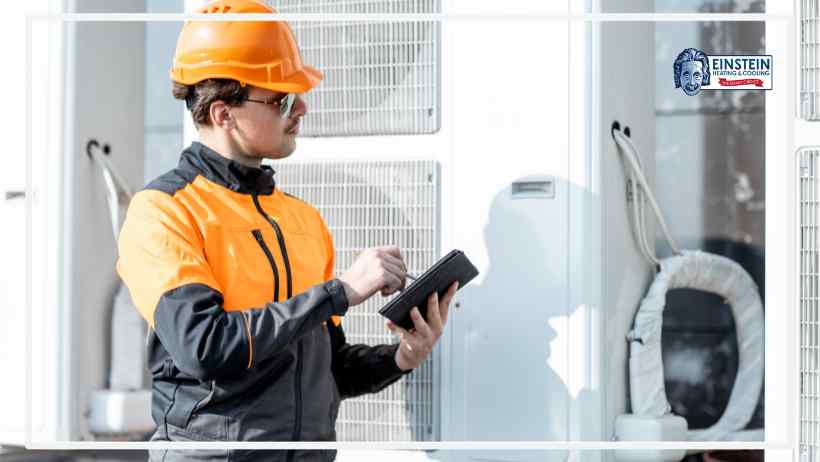
6. Lack of Proper Insulation
In colder climates like Phoenix, proper insulation is vital to prevent frost buildup on the heat pump. Inadequate insulation can contribute to heat loss and inefficient defrosting.
- Insulation Inspection: Inspect the insulation around refrigerant lines and outdoor components for any gaps or wear.
- Enhanced Insulation: Add or replace insulation where needed to ensure proper heat retention.
- Professional Assessment: Consider seeking professional assistance to assess and improve overall insulation in your HVAC system.
7. Dirty or Clogged Air Filters
Dirty or clogged air filters restrict airflow, affecting the heat pump’s efficiency and contributing to frost accumulation. Regularly replacing air filters is a simple yet effective way to prevent defrost issues.
- Adherence to Recommendations: Follow the manufacturer’s recommendations for filter replacement intervals.
- Quality Filters: Use high-quality air filters that match the system’s specifications for optimal performance.
- Upgrade Consideration: Consider upgrading to HEPA filters for improved air quality and enhanced system performance.
8. Environmental Factors
External elements such as heavy snowfall or freezing rain can exacerbate heat pump defrost issues. Understanding and mitigating the impact of these environmental factors are crucial for maintaining optimal system functionality.
- Snow and Ice Clearance: Clear snow and ice buildup around the outdoor unit during winter storms to prevent obstruction.
- Protective Cover: Install a protective cover over the heat pump to shield it from extreme weather conditions.
- Weather Monitoring: Regularly monitor weather forecasts and take preventive measures when severe weather is anticipated.
Defrosting your heat pump is an essential task to maintain its efficiency, particularly in climates like Phoenix, where temperature fluctuations can lead to frost accumulation. If you’re searching for “heat pump repair Phoenix,” make sure to know how to find the “best heating repair in my area.” Follow this comprehensive step-by-step guide to ensure a thorough and effective defrosting process for your heat pump.
How To Defrost Heat Pumps
Turn Off the Heat Pump:
- Begin by shutting off the heat pump to prevent any potential safety hazards during the defrosting process.
- Locate the thermostat and set it to the “Off” position to ensure the system doesn’t continue running while defrosting.
Check for Ice Accumulation:
- Conduct a visual inspection of the outdoor unit to identify any visible ice buildup on the coils and surrounding components.
- Ensure that the ice accumulation is not obstructing airflow or causing damage to the unit.
Remove Snow and Debris:
- Clear away any snow or debris around the outdoor unit using a soft broom or brush.
- Create a clear space around the unit to facilitate proper airflow during the defrosting process.
Inspect Refrigerant Lines:
- Examine the refrigerant lines for signs of ice formation or frost.
- Confirm that the lines are not frozen, as this could indicate potential issues with refrigerant levels or insufficient insulation.
Switch to Cooling Mode:
- Adjust the thermostat settings to switch the heat pump into cooling mode.
- This change prompts the system to redirect warm air from the indoors to the outdoor unit, aiding in the natural defrosting process. Heat pumps in cooling mode may also be cost-effective.
Monitor the Defrost Cycle:
- Allow the heat pump to run in cooling mode for an adequate period to initiate and complete the defrost cycle.
- Keep a close eye on the outdoor unit for signs of ice melting and water dripping as the defrost cycle progresses.
Verify Proper Functionality:
- Once the defrost cycle is complete, switch the thermostat back to the heating mode.
- Confirm that the heat pump resumes normal operation without any unusual sounds, and verify that warm air is being efficiently distributed.
Clean or Replace Air Filters:
- Inspect the air filters for dirt or clogs that may be contributing to the defrost issues.
- Clean or replace the filters as necessary to maintain unimpeded airflow through the system.
Inspect Coils for Damage:
- Examine the outdoor coils for any visible damage or bending caused by ice accumulation.
- If there are bent fins, use a fin comb to gently straighten them, ensuring optimal airflow through the coils.
Schedule Professional Maintenance for Heat Pump Repair:
- Consider scheduling professional maintenance at least once a year, ideally before the winter season, to prevent recurring defrost issues.
- A qualified technician can perform a thorough inspection, check refrigerant levels, and address any underlying problems contributing to defrosting difficulties.
Consider Insulation Improvements:
- Evaluate the insulation around refrigerant lines and other critical components.
- Enhance insulation where needed to prevent future frost buildup and to ensure optimal heat pump performance in varying weather conditions.
Clear Surroundings Regularly:
- Develop a habit of heat pump repair service wherein there is regular clearing of snow, leaves, and debris around the outdoor unit throughout the winter season.
- Maintaining a consistently clean and unobstructed area around the heat pump promotes efficient operation and minimizes the likelihood of frost accumulation.
Conclusion
Effectively addressing heat pump defrost issues in Phoenix, Arizona, requires a combination of preventive measures and timely repairs. If persistent defrost problems arise, seeking professional assistance for heat pump repair from Einstein Heating and Cooling is advisable to ensure long-term reliability and energy efficiency. By implementing the strategies outlined in this guide, you can safeguard your heat pump against defrost issues and enjoy consistent heating and cooling performance throughout the year.
